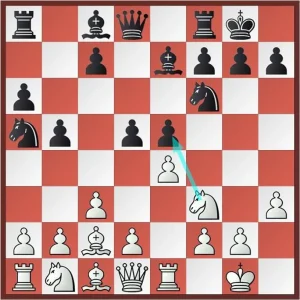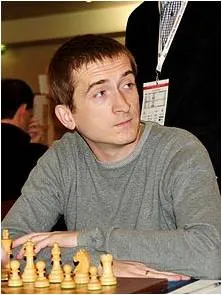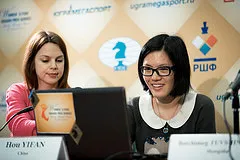New in Chess Yearbook 104 Review
Chessbibliophile continues his series of reviews on New in Chess Yearbooks, important titles from the point of opening theory. If you wish to read a review of the New in Chess Yearbook 103 it may be found here -Ed.

Softcover:248 Pages
New In Chess. 2012
In my review of New in Chess Yearbook 103 I was rather critical of its format and even pointed out flaws in analysis. But then standards matter.
This issue offers 28 surveys ranging from the Sicilian to the Slav. There are four articles on the Slav alone. Among them I would single out the updates by Istvan Almasi as they offer a discussion of critical lines from the World Championship Match 2012.

There is only one caveat. The so-called “special contribution” by Gelfand here is a condensed version of his personal commentary in New in Chess Magazine, 4/2012. The latter is better. It’s time for NiC publishers to do away with Informant style notes in yearbooks and switch over to annotations with proper explanation in words.
I also have a problem with the column, *Kuzmin’s Harvest. Each example cited in the column demands detailed treatment. But here the discussion tends to be brief and unsatisfactory. A case in point is the Kramnik-Carlsen encounter from Tal Memorial Tournament, 2012.

In the game Carlsen landed in a lost position after erring on the 16th move. It took some resourceful defence on his part to save the game.

Kuzmin is at a loss to understand how it all happened. If he had heard the players at the press conference, he would have come to know: here and here.
(For our readers, we have provided a detailed analysis of this game. Download the pgn here -Ed.)
In fairness to Kuzmin it should be mentioned that he excels elsewhere in the same issue with his survey of a line in the English Opening.
For those who love adventurous play, however, I would mention Larry Kaufman’s survey

on the following line:1.e4 e5 2.Nf3 Nc6 3.Bg5 a6 4.Ba4 Nf6 5.0-0 Be7 6.Re1 b5 7.Bb3 0-0 8.c3 Na5!? TN
(The Accelerated Gajewski Gambit against the Ruy Lopez)

At first sight one assumes, Black’s last move should be an error in notation or a finger slip by an absent-minded player. Otherwise it looks like an act of insanity to abandon the e-pawn to its fate.
As it emerges from subsequent play, there is a method to this madness. Now the Spanish has been played for nearly two centuries. No one seems to have thought of this audacious move. In his survey on this line Larry Kaufman attributes the gambit to Oleg Shakhnazarov, a 2165-rated U.S. player who employed it three years ago and won.
The Gajewski Gambit proper occurs with a different sequence of moves:
1.e4 e5 2.Nf3 Nc6 3.Bg5 a6 4.Ba4 Nf6 5.0-0 Be7 6.Re1 b5 7.Bb3 d6 8.c3 0-0 9.h3 Na5 10. Bc2 d5!?


This line named after the Polish GM Grzegorz Gajewski is now well-studied, thanks to the pioneering efforts of the same Alexey Kuzmin who brought it to public notice with his first survey in Yearbook 88.
The first is still developing and needs more practical tests (Download pgn).
In any case the yearbook scores over others with the work done on these lines.
There is much else for a diligent student to learn from, be it the popular Forum or the book reviews by Glenn Flear.
Check it out if you lay your hands on this yearbook.
(For more info. on this yearbook, see the publisher’s site -Ed.)
Get the New in Chess Yearbook 104
Notes:
1) This is not Gennady Kuzmin, a contemporary of Anatoly Karpov, but Alexey Kuzmin, a present day Russian grandmaster.
2)In the Kuzmin column the name of an historical figure is also misspelt. It should be Maheshchandra Bannerjee, and not Maheshcandra Bannerjee. The colonial masters of British Raj could neither spell nor pronounce Indian names. There are less excuses for getting them wrong today.










Comments: